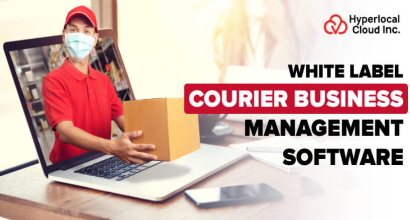The rising competition and customer demands have completely changed business dynamics. Businesses and organizations have started paying more attention to their operations and assets. Proper management of a company's assets helps streamline operations and boost efficiency. This led to the increasing demand for Asset management software among businesses and organizations to handle their assets efficiently.
Some famous stats predict that the asset management software market will reach USD 7.3 billion by 2029, with a CADR of 16% over the forecasted period. Therefore, if you run a startup or have established your own entrepreneur and haven't incorporated asset management software in your organization, then this blog is for you.
This blog explains in complete detail about asset management software, such as the development process, cost, benefits, features, and more
Basic Overview of Asset Management Software
Asset Management Software is an integrated, robust solution that allows businesses to track, control, and optimize their assets from a centralized platform. This allows them to manage each operation effectively, whether machinery, buildings, or physical assets. Asset management software aims to let businesses track assets' value, usage, and maintenance needs.
It reduces staff's administrative burden by automating tasks like maintenance scheduling, reduction, compliance, etc., which helps reduce costs, minimize downtime, and increase assets' financial value.
Take Control of Your Assets With the Best Asset Tracking Software!
Explore Various Types of Asset Management Software
Below is the list of the various types of the best asset tracking software we provide.
Physical Asset Management Software
Discover our simple yet powerful physical asset management software without any cost of separate licenses or the need to carry separate handheld scanners. Extend the lifespan of valuable resources such as equipment and machinery with advanced features.
Digital Asset Management Software
Our revolutionary digital asset management software helps manage media files such as images, videos, and documents. Its top-class features include version control, intelligent categorization, and secure sharing, ensuring all data is organized, stored, and retrieved effortlessly.
Vehicle Fleet Asset Management Software
We also build fleet management software that helps operators monitor fuel usage, schedule maintenance, and track fleet location. All these features help optimize fleet performance, improve route planning, reduce downtime, and enhance security for maximum vehicle efficiency.
Enterprise Asset Management Software
Enterprise Asset Management Software is built for large organizations to streamline their physical asset tracking operations. It helps manage an asset's entire lifecycle and track performance while ensuring compliance with regulations.
IT Asset Management Software
Our IT asset management software helps manage all IT assets, including software licenses and hardware devices. It automates administrative tasks such as regular audits and asset tracking to simplify operations. The software also reduces security risks and ensures industry compliance for smooth operations.
Essential Features of Asset Management Software
An ideal asset management software provides comprehensive support in tracking assets, improving performance, and reducing operational costs. The following are the key features of the best asset-tracking software. Let us have a look at it!
Inventory Control
Asset management software's inventory control module makes monitoring asset location, movement, and quality easy. Here, the user can use RFID or Barcode scanning technologies to rapidly scan and update the asset status in the system. This module reduces the scope for human error and increases the accuracy of inventory records to a great extent. Companies can also link the system with accounting systems to record asset depreciation with accuracy. This unification facilitates precise financial planning, reporting, and analytics for improved asset well-being.
Asset Tracking System
Asset tracking is the core functionality of asset management software. This feature enables users to monitor the location, status, and usage of assets, ensuring they are utilized and accounted for.
With rising technological advancements, this feature incorporates iOT technology with sensors such as RFID, Barcode, or Geolocation tracking. These sensors help efficiently track large volumes of indoor and outdoor assets to identify potential issues and anomalies and facilitate timely interventions.
Plan Maintenance Schedules
The asset management software helps users make a proper plan for their asset maintenance schedules. It scans the assets at regular intervals, ensuring preventive measures are taken in advance to avoid any damage and unexpected costs.
Integration Capabilities
As the name suggests, the integration capabilities feature refers to seamlessly connecting the asset management system with other systems to exchange data and information securely. It automatically feeds data in operational planning systems when crucial equipment needs maintenance, allowing immediate adjustments. For example, integrating asset management software with CRM systems provides valuable insights that help better asset management, enhancing customer services and their experience. Similarly, linking asset data with an ERP system helps make informed decisions about financial planning and allocations.
Security and Compliance
The asset management system's asset management feature ensures that sensitive data associated with an organization's assets is protected. The software properly finds and divides all assets to check what needs to be secured. Then, it uses security measures such as audits and encryptions to mitigate risks and ensure compliance with all the industry regulations.
Employee Profile and Role Management
The best asset-tracking software unlocks a feature of employee role management. In this feature, when an asset needs maintenance, the software automatically assigns the task to a specific technician. It also pops an instant notification on the employee dashboard to remind them of their duties, ensuring no work order is ever forgotten.
Hire the Proficient Asset Management Software Developers!
Development Process of Asset Management Software
Developing well-performing Asset management software requires a strategic approach and strong technical skills. Only a proficient team of developers can build robust and the best asset-tracking software. Therefore, considering hiring an on-demand mobile app development company to manage your organization's assets and boost profits is a smart move.
Requirement Gathering
First, the team meets with their clients to discuss the project and requirements. Then, they do complete market research to identify the target audience, market trends and demands to create a roadmap for development.
UX/UX Design
Then, the designers create a visually appealing interface with precise icon placement, multiple animations, consistent typography, and color schemes. This grabs users' attention and increases their business's online visibility.
Development Phase
In this phase, developers select the most appropriate tech stack, including high-performing programming languages, databases, libraries, and frameworks, to build robust asset management software. They incorporate the software's core features and enhance third-party APIs to enhance its overall functionality and scalability.
Testing and Quality Assurance
Once the app is developed, the testing engineers conduct rigorous testing. They check the app's elements through various parameters to find any issue to bug using multiple parameters and tools such as Selenium, Appium, and Testlink. If testers find any issue, they send it back to the developers to mitigate. This helps them ensure the software has outstanding performance, scalability, and security for an excellent customer experience.
Deployment
After testing, the software is deployed publicly on platforms, including Wix, Wordpress.com, Squarespace, Shopify, or HubSpot.for official use. They also conduct continuous monitoring to enhance the app's function and provide service updates to offer a fantastic user experience.
Build a Transforming Asset Management Software!
Tech Stack Used to Build Robust Asset Tracking Software
Choosing a tech stack inappropriate for the complexity level of asset management software can significantly increase the development cost. An unsuitable tech stack requires more custom coding, longer development time, and additional tools, contributing to higher project expenses.
| Type | Technology |
| Front end | React.js, Angular |
| Back end | Node.js with Express.js, python with Django |
| Database | SQL, MySQL, MongoDB |
| Security and Authentication | OAuth 2.0, SSL/TLS |
| Cloud Infrastructure | AWS, Google Cloud Platform, Microsoft Azure |
| Data Processing and Analytics | Apache Kafka, Power BI |
How Much Does It Cost to Build an Asset Tracking Software?
The estimated development cost of the best asset tracking software starts from 10k. However, the real cost depends on various factors. Some of these are mentioned below.
Features and Complexities
The intricacy and quantity of features in the software define its overall development cost. Incorporating basic features requires less development time and cost, whereas building software with advanced features such as asset identification, search filters, maintenance scheduling, and reporting capabilities requires more development time and cost.
User Interface Design
Next, a software's user interface design impacts its development cost. A simple UI with straightforward navigation is cheaper to develop than a complex one with multiple animations and nested menus.
Development Team Size
The development team affects the cost of software development. These people include skilled designers, developers, and testers. Hiring them may cost more, but the results are worthwhile.
Third-party Integrations
Indeed, integrating third-party APIs helps enhance the software's functionality. However, the complete integration process requires advanced research with more development time, which increases its development time.
Compliance Requirements
Though compliance with industry regulations is crucial to avoid legal problems, it requires excessive documentation with user manuals and technical expertise, which increases the development cost.
Choice of Tech Stack
Choosing a tech stack that is inappropriate for the complexity level of asset management software can significantly increase the development cost. An unsuitable tech stack requires more custom coding, longer development time, and additional tools, contributing to higher project expenses.
Businesses that can use Asset Management Software
Explore the list of industries that can use the best asset-tracking software below.
Healthcare
Healthcare is a sensitive industry that requires proper maintenance of each piece of equipment for secure patient treatment. Investing in robust asset management software helps maintain proper track of medical equipment and inventory. The software automates various administrative tasks and provides in-depth insights about equipment inventory, which helps minimize maintenance costs.
Real Estate
Real Estate is one of the vast and profitable business ideas. Companies purchase properties at a decent price to resell them for more profits. Some companies even lease out purchased property to earn higher profits. Hence, it's challenging to manage this complex sector through traditional practices; instead, set management software is a crucial requirement. It helps professionals manage their property equipment, maintenance schedules, and more while ensuring compliance with regulations.
Manufacturing
IT asset management software also benefits the manufacturing sector. It helps professionals manage inventory levels while providing detailed insights that predict depreciation and assist them in making informed decisions to improve the lifespan of assets.
Business advantage of asset tracking software
Investing in the best asset-tracking software benefits various industries and businesses. There are compelling business benefits to using revolutionary software below.
Better inventory management
Asset management software provides valuable insight about equipment performance, use rates, maintenance, and cost. These details help in making informed decisions about asset replacement and adaptation for proper inventory management.
Maintenance and Repair
Regular asset maintenance assures operational efficiency and prevents unexpected failures. Asset management software helps to schedule regular inspections and repairs based on the use and situation of the property.
Cost Saving and Efficiency
Another benefit of asset management software is cost reduction. It provides accurate and real-time insights on asset availability, usage, and condition. This feature helps professionals prevent over-purchasing or under-utilizing resources, ensuring better budget allocation and more profits.
Regulatory Compliance and Audits
An ideal asset management software provides value insights and reports on asset performance, usage, maintenance history, and costs. These detailed insights help professionals make informed decisions about asset replacement and optimization.
Improved Productivity
Manual asset management consumes time and is prone to human errors. However, asset management software inventory automatic time-taking tasks such as tracking and schedule maintenance, which helps reduce mistakes and save valuable time. In addition, the software is easily integrated with other commercial systems, such as customer relationship management, for smoother work.
Why Choose HyperLocal Cloud to Build the Best Asset Tracking Software?
Hyperlocal Cloud is a top-notch on-demand mobile app development company. Over the years, we have created a proven track record in building revolutionary mobile apps and innovative marketplaces. Our solutions help businesses streamline operations, improve service quality, and drive success in the competitive business world. Partner with us and watch your growth.



